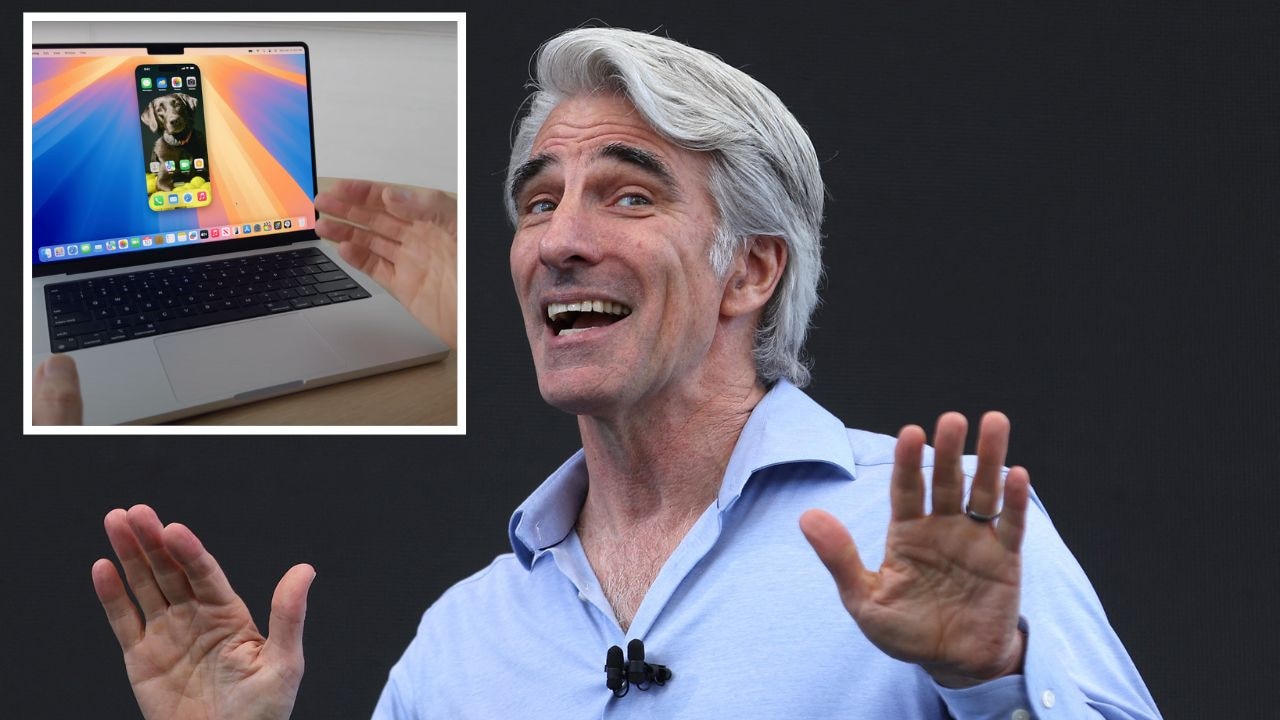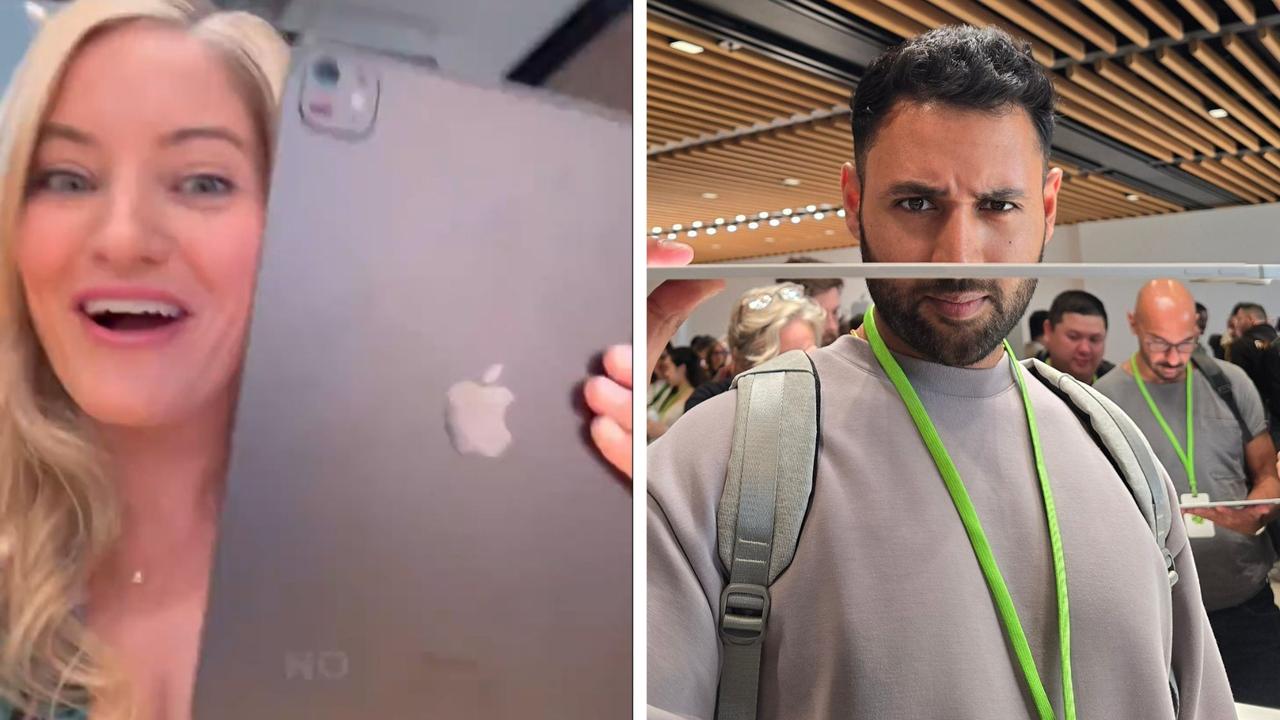Samsung launches high-end Galaxy Tab S tablet to beat Apple iPad Air
IT’S faster, lighter and thinner than Apple’s iPad Air, but will the Samsung Galaxy Tab S win over the tablet market?
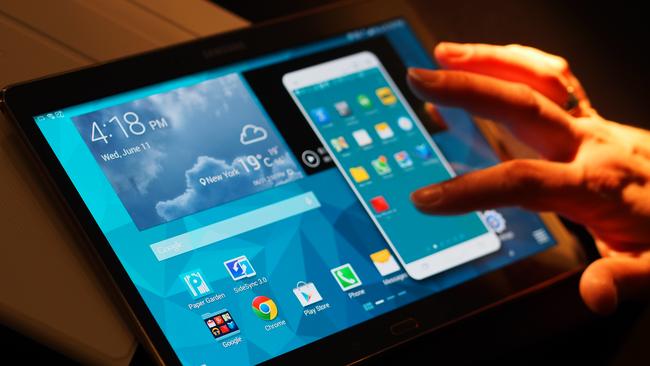
SAMSUNG today launched a global assault on Apple’s share of the tablet market, taking over New York’s famous Madison Square Garden to reveal a its first range of premium tablet computers.
The Galaxy Tab S tablets are designed to lure disaffected iPad users to Apple’s major rival and cash in on the growing popularity of Samsung smartphones.
Due in Australia next month, Samsung’s two new tablets are thinner and lighter than their iPad equivalents, and will feature more powerful, eight-core computer chips, fingerprint scanners, and larger, high-resolution screens.
The Tab S tablets will also let users take phone calls, send SMS messages, and control Samsung smartphones from their larger screens.
REVIEW: Fast, solid and easy to use
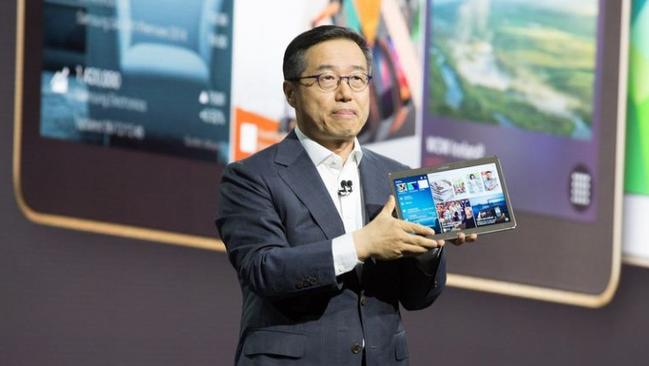
Samsung Australia product marketing director Jenny Goodridge admitted the tech giant had ignored the high-end tablet market previously, focusing on cheaper models instead.
“It has been a gap,” she said. “We know from our research that Galaxy S phone buyers have a preference for Samsung tablets but we haven’t had a premium model available.”
In a veiled reference to converting Apple users, Ms Goodridge said consumers were no longer “locked” into just one mobile software system, as apps were now commonly available on both major platforms.
“This perception that you are locked in to a (software) ecosystem is starting to disintegrate,” she said. “In the past, Android has lagged behind but we’ve worked really hard to make sure the same apps and services are available on Android as in other ecosystems. All the free apps that people use most often — Facebook, Twitter, LinkedIn — they’re available across both platforms.”
DO I OR DON’T I?: 10 reaons you should, and shouldn’t, buy a Tab S
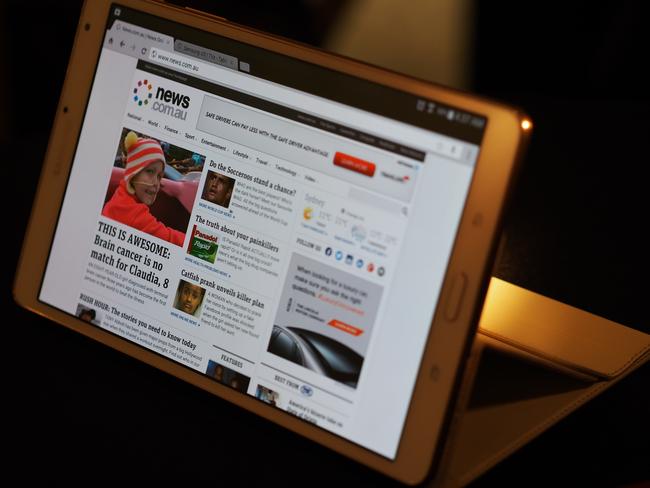
Samsung’s first major tablet launch comes as Apple loses its grip on the market it single-handedly created in 2010.
The Cupertino company’s share of worldwide tablet sales slipped from 52 per cent in 2012 to just 36 per cent last year, according to Gartner.
By comparison, Google Android-based tablet sales leapt from 45 per cent to 61 per cent.
Ms Goodridge said Samsung was still number two for tablet sales in Australia, however.
The company’s new models will be available in 10.5-inch and 8.4-inch sizes, with strikingly slim profiles of just 6.6mm that Samsung says is equivalent to “a stack of five credit cards”.
Both will be powered by eight-core computer chips and will feature fingerprint scanners for security, 4G connectivity, eight-megapixel cameras, and a new software feature that lets users connect and control their Samsung phone on the tablet’s screen.
The feature, called Side Sync 3.0, will show the connected phone in miniature on the tablet, allowing users to take calls on the larger device, swap files between the devices, play games on a big screen, or use its keyboard to type text messages.
Both Tab S tablets will also feature Super AMOLED screens with a resolution of 2560 x 1600 pixels, delivering a higher pixel count than an Apple iPad’s Retina screen.
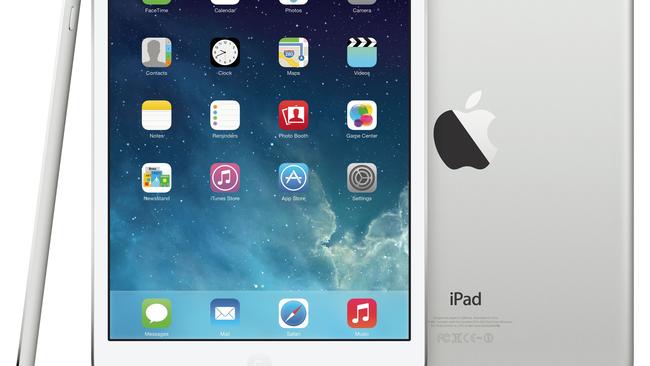
The tablets will also be compatible with new Simple Clickers covers that do not use magnets.
New Samsung services announced with the tablets, including Milk Music and a Paper Garden magazine app, will not be available in Australia from launch, however.
The Tab S tablets will cost $US499 and $US399 respectively in the United States, and sources report the 10.5-inch tablet’s Australian price could sit at less than $600, matching the cheapest iPad Air.
*Jennifer Dudley-Nicholson travelled to New York as a guest of Samsung.


